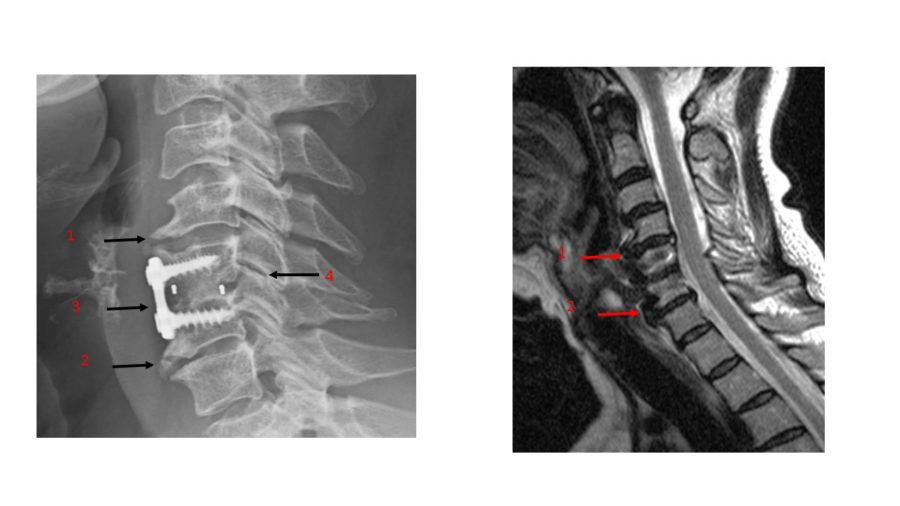At the Centeno-Schultz Clinic, we are committed to providing each patient the most advanced nonsurgical treatment, utilizing platelet, cytokine, and stem cell injections, for common orthopedic conditions. The risks associated with surgery are many and have been discussed in previous blogs. These include infection, failure, persistent or elevated pain, change in biomechanics, and adjacent segment disease.
DD is a case in point, whom I treated last week in clinic. DD is a 55-year-old traveling nurse who underwent neck surgery in 2012 secondary to pain and intermittent arm numbness. While DD did have some transient improvement following surgery, three years later, she is straddled with severe neck pain.
Adjacent Segment Disease: A Consequence of Cervical Spinal Surgery
DD has adjacent segment disease, which is demonstrated in the pictures below. It is the consequences of fusing two or more spinal vertebral bodies together and removing the disc (the shock absorber). This profoundly changes the mechanics of the spine, placing additional mechanical stress on the disc above and below the fusion in addition to the posterior facet joints. Over time, the additional stress results in breakdown and injury of the adjacent discs and facets.
The consequences of the neck surgery are shown above in the cervical X-ray on the left and cervical MRI on the right.
The fusion is well seen on the X-ray as two screws and an adjoining plate (red 3). The fusion has resulted in additional mechanical stress on the discs above and below the fusion (red 1 and red 2). The disc space is narrowed with anterior bone spurs evident on the X-ray on the left.
On the right, the levels above and below the fusion have disc protrusions. Posteriorly, the facet joints (red 4) have become injured and narrowed. Regrettably, the discs and facets are sources of pain. Surgeons have offered to extend the fusion, which DD has declined. She opted to be treated with precise-guided platelet injections around the discs, facets, and ligaments.
If you have neck pain and have been told that you are candidate for neck surgery, think long and hard about the long-term consequences. Surgery changes things forever and often times creates new and more-severe problems. Schedule an evaluation at the Centeno-Schultz Clinic, where a board-certified, fellowship-trained physician will discuss nonsurgical treatment options utilizing platelets, cytokines, or stem cells.




